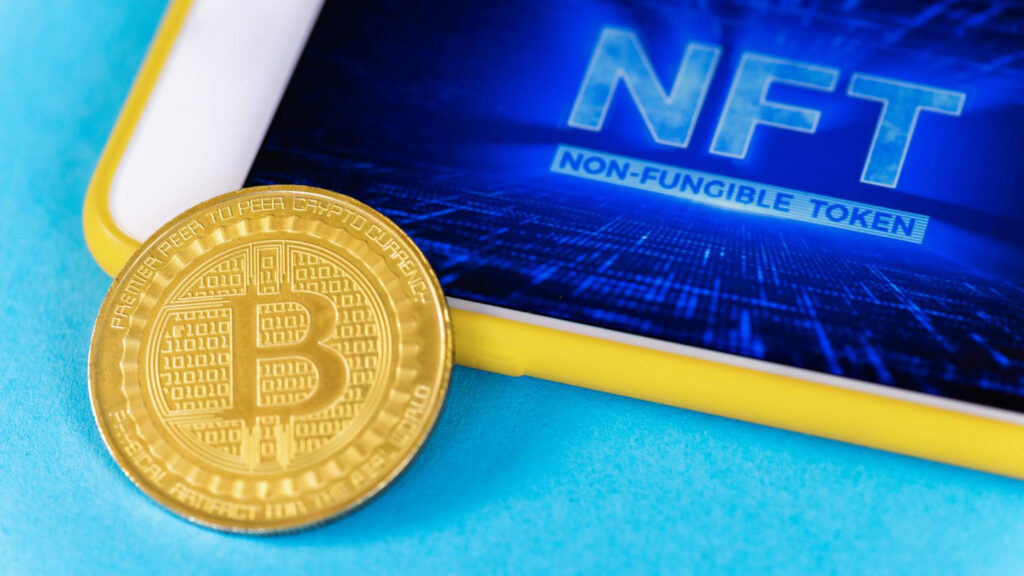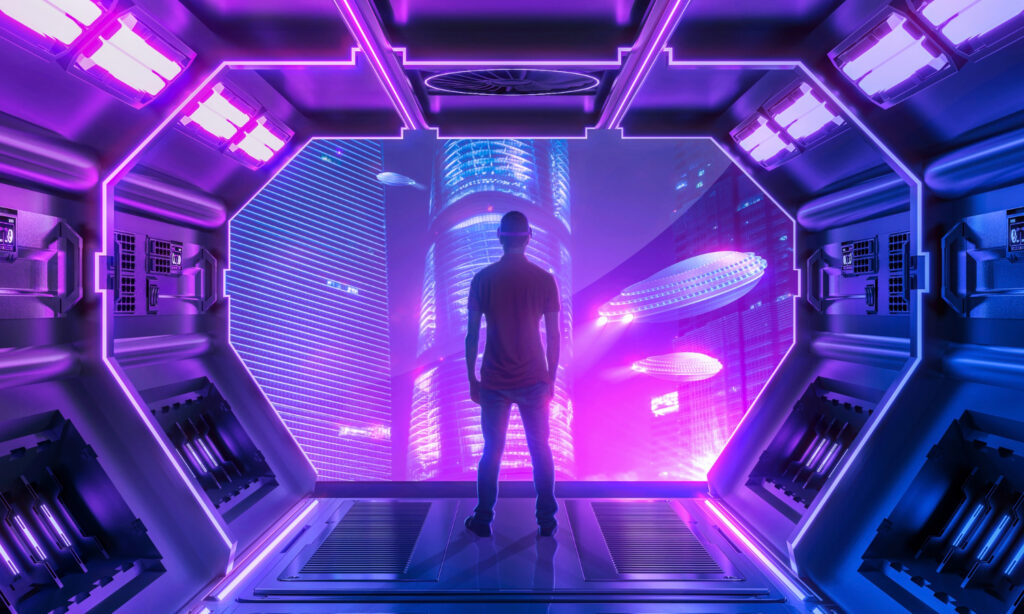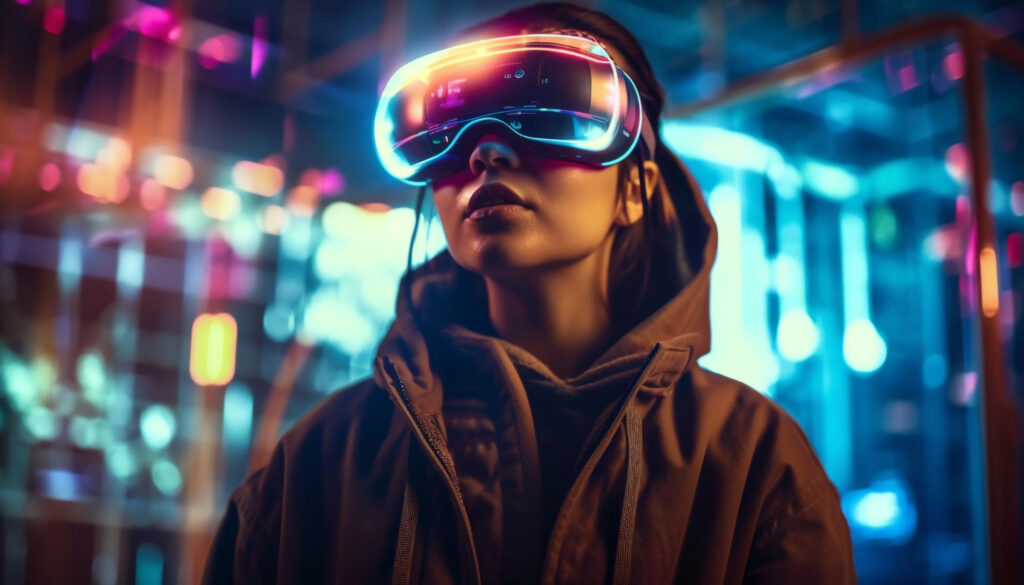The digital landscape has been utterly transformed by the advent of non-fungible tokens (NFTs), especially within the realm of gaming. These singular digital assets encompass an array of items, from in-game treasures to digital masterpieces and even virtual real estate. Harnessing the power of blockchain technology, NFTs facilitate secure ownership and exchange of digital possessions.
As a result, crafting NFT-infused gaming experiences has become a pivotal component of the gaming industry, with developers eager to capitalize on NFTs’ cutting-edge features. This article dives into the exhilarating world of NFT game development, examining its core elements, obstacles, and potential ramifications for the gaming world.
Understanding NFTs and their Role in Gaming
NFTs are digital tokens signifying ownership of one-of-a-kind items. In contrast to cryptocurrencies like Bitcoin, which are fungible and easily swapped, NFTs are inherently unique, making them ideal for symbolizing items with exclusive attributes. This distinct quality has catapulted NFTs to stardom in the gaming sphere, where they can embody in-game assets such as:
- Avatars;
- Arsenal;
- Cosmetic enhancements.
Integrating NFTs into games presents several benefits:
Ownership and transferability
NFTs empower gamers with true ownership and effortless transferability of their in-game treasures, as these assets reside on a decentralized blockchain and can be exchanged between users without intermediary involvement. This bestows gamers with heightened control over their virtual assets and streamlines the process of trading and selling them.
Provable scarcity
Blockchain technology is the backbone of NFTs, enabling the verifiable scarcity of digital items, instilling a sense of value and exclusivity for rare and limited-edition assets. This injects an additional layer of worth into gaming assets, as players can showcase their possession of exceptional items that carry substantial value.
Interoperability
NFTs boast compatibility across diverse games and platforms, granting gamers the freedom to employ their cherished assets in a variety of virtual arenas. This enhances the adaptability of NFT assets, enabling players to tailor their gaming experiences and unlock a broader spectrum of gaming adventures.
Monetization
The bustling secondary market for NFTs equips players with innovative means to monetize their in-game accomplishments and assets. They can seize opportunities to purchase, vend, or barter NFTs within a thriving marketplace. This empowers gamers to generate revenue from their virtual exploits and rewards, paving the way for fresh avenues of gaming monetization.

The NFT Game Development Process
Conceptualization
The initial step entails crafting a captivating game concept that seamlessly weaves NFTs into the fabric of the game. This process includes:
- Devising game mechanics;
- Outlining the virtual world;
- Pinpointing how NFTs will meld with the gameplay.
Choice of blockchain
Developers are tasked with selecting an apt blockchain platform to underpin their game. Renowned options include:
- Ethereum;
- Binance Smart Chain;
- Flow.
Moreover, considerations encompass scalability, transaction fees, and the platform’s developer community.
Smart contract development
Smart contracts, self-executing agreements with the terms encoded directly into the code, dictate the generation, ownership, and exchange of NFTs within the game. Developers must engineer robust and secure smart contracts to guarantee a fluid and enjoyable gaming experience for players.
NFT asset creation
When fashioning NFT assets, creators must contemplate the functionality and purpose of their assets within the game or platform they are tailored for. This demands making certain that their NFTs possess well-defined use cases and contribute to a more immersive and valuable experience for gamers.
Game development
Developers are responsible for constructing a game capable of supporting a multitude of NFT transactions without sacrificing speed or security. This entails rigorously testing the game and honing its performance to deliver a glitch-free gaming experience to users.
Testing and deployment
Prior to the game’s release, developers must thoroughly examine its functionality, performance, and security to guarantee a seamless experience for players. After the game has been scrutinized and fine-tuned, it can be deployed on the selected blockchain platform.
Challenges in NFT Game Development

Scalability
Blockchain networks may experience congestion and sluggish transaction times, adversely impacting the gaming experience. Developers must contemplate scalability solutions to guarantee fluid and efficient gameplay. They can also investigate other viable approaches, such as off-chain transactions and sharding, to boost the scalability of NFT gaming adventures.
High transaction fees
Certain blockchain platforms, like Ethereum, are notorious for their steep transaction fees, potentially discouraging players from engaging in NFT games. Developers ought to assess the most cost-efficient alternatives for their target demographic and may need to explore layer 2 solutions or different blockchain platforms to curb fees.
Security
Safeguarding the security of smart contracts is crucial to defend players’ assets and uphold the game’s integrity. Developers must meticulously audit and test their smart contracts to diminish vulnerabilities and potential exploitations.
Legal and regulatory compliance
As the NFT domain matures, developers must remain vigilant of the shifting legal landscape and confirm that their games adhere to pertinent laws and regulations, encompassing those linked to:
- Intellectual property;
- Consumer protection;
- Taxation.
Adoption and user experience
Crafting a game that captivates users is paramount for driving the adoption of NFTs in the gaming sphere. Developers must strike a delicate balance between innovation and familiarity, offering players an instinctive interface and enthralling gameplay while harnessing the unparalleled features of NFTs.
Environmental concerns
The energy consumption of certain blockchain networks, particularly those employing proof-of-work consensus mechanisms, has sparked concerns regarding their environmental footprint. Developers ought to weigh the sustainability of their chosen platform and seek energy-efficient alternatives when feasible.
Monetization Strategies for NFT Games
Successful NFT games often employ a variety of monetization strategies to generate revenue, such as:
Primary sales
Primary sales encompass the conception and sale of one-of-a-kind gaming experiences or features, such as elusive quests or privileged game modes. These NFT assets can grant players a feeling of ownership and exclusivity, enriching their overall gaming journey.
Secondary market fees
Developers can motivate players to engage in trading and selling NFT assets, thereby amplifying the game’s engagement and longevity. Moreover, by procuring a share of these transactions, developers can persist in generating revenue long after the initial sale of the NFT asset.
Subscription models
Subscription models can supply a dependable revenue stream for developers, enabling them to maintain ongoing development and operational costs. Furthermore, this model can foster a sense of camaraderie and allegiance among players who are committed to the game’s continuous development and success.
In-game advertising
In-game advertising can offer developers a fresh revenue source without directly impinging on the player’s gaming experience. When executed with finesse, ads can bolster the immersive essence of the game world, contributing to the overall authenticity of the adventure. Furthermore, collaborations with brands can benefit players, granting them access to exclusive content or features sponsored by the brand.
Staking and DeFi integration
Incorporating staking and DeFi can introduce a new layer of intricacy to NFT games, granting players more authority over their assets and unlocking revenue-generation pathways.
This integration can also stimulate engagement and investment in the game, as players have the potential to reap additional rewards through staking and liquidity provision. The amalgamation of DeFi elements can entice a broader array of players interested in the advantages of blockchain technology beyond the gaming industry.
The Future of NFT Game Development

The swiftly expanding NFT gaming domain shows no signs of hitting the brakes as developers persist in pioneering and crafting fresh experiences that capitalize on the unparalleled characteristics of NFTs. Keep an eye out for these potential trends and developments in the future:
Cross-platform and cross-game integration
As NFTs gain widespread adoption, brace yourself for heightened interoperability between games and platforms, empowering players to employ their NFT assets across an array of gaming universes.
Play-to-earn models
The success of games like Axie Infinity showcases the potential of play-to-earn models, where players can earn income simply by partaking in the game. This trend is set to persist, with a growing number of games embracing play-to-earn elements.
Virtual and augmented reality integration
As VR and AR technologies forge ahead, anticipate NFTs taking center stage in these enthralling gaming experiences, offering developers fresh opportunities to produce captivating and interactive content.
Gamification of non-gaming NFTs
As NFTs gain traction in various industries such as art, music, and sports, developers may discover opportunities to craft games that ingeniously and engagingly integrate these non-gaming NFTs.
Conclusion
The fusion of NFTs with the gaming industry has unleashed a torrent of innovation and opportunities for developers, players, and investors. By bestowing true ownership and transferability of digital assets upon players, NFTs have unlocked methods to monetize gaming experiences and boost engagement. However, NFT game development faces its own set of hurdles, such as:
- Scalability;
- Transaction fees;
- Security;
- Legal compliance.
Overcoming these obstacles will be vital in crafting captivating NFT games that are both accessible and sustainable.
Peering into the future, NFT game development is filled with promise, including prospects for cross-platform integration, play-to-earn models, and VR and AR technology integration. As the NFT landscape continues to morph, developers must stay nimble and receptive to emerging ideas and trends, creating experiences that not only exploit the unique attributes of NFTs but also deliver engaging and immersive gameplay.
In the end, the success of NFT games hinges on their ability to captivate and retain players, offering them experiences that are enjoyable, gratifying, and groundbreaking.